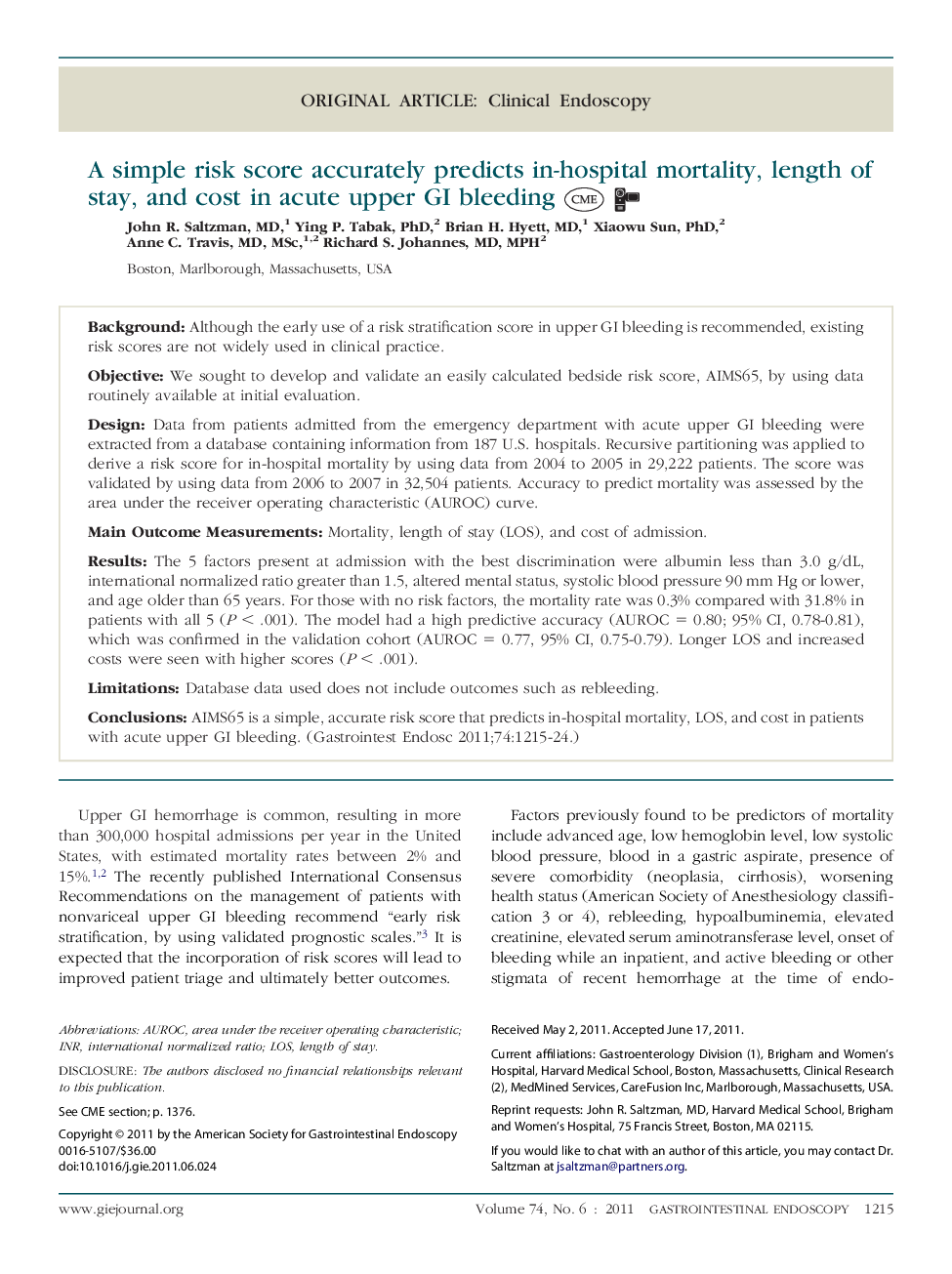| Article ID | Journal | Published Year | Pages | File Type |
|---|---|---|---|---|
| 3305048 | Gastrointestinal Endoscopy | 2011 | 10 Pages |
BackgroundAlthough the early use of a risk stratification score in upper GI bleeding is recommended, existing risk scores are not widely used in clinical practice.ObjectiveWe sought to develop and validate an easily calculated bedside risk score, AIMS65, by using data routinely available at initial evaluation.DesignData from patients admitted from the emergency department with acute upper GI bleeding were extracted from a database containing information from 187 U.S. hospitals. Recursive partitioning was applied to derive a risk score for in-hospital mortality by using data from 2004 to 2005 in 29,222 patients. The score was validated by using data from 2006 to 2007 in 32,504 patients. Accuracy to predict mortality was assessed by the area under the receiver operating characteristic (AUROC) curve.Main Outcome MeasurementsMortality, length of stay (LOS), and cost of admission.ResultsThe 5 factors present at admission with the best discrimination were albumin less than 3.0 g/dL, international normalized ratio greater than 1.5, altered mental status, systolic blood pressure 90 mm Hg or lower, and age older than 65 years. For those with no risk factors, the mortality rate was 0.3% compared with 31.8% in patients with all 5 (P < .001). The model had a high predictive accuracy (AUROC = 0.80; 95% CI, 0.78-0.81), which was confirmed in the validation cohort (AUROC = 0.77, 95% CI, 0.75-0.79). Longer LOS and increased costs were seen with higher scores (P < .001).LimitationsDatabase data used does not include outcomes such as rebleeding.ConclusionsAIMS65 is a simple, accurate risk score that predicts in-hospital mortality, LOS, and cost in patients with acute upper GI bleeding.
